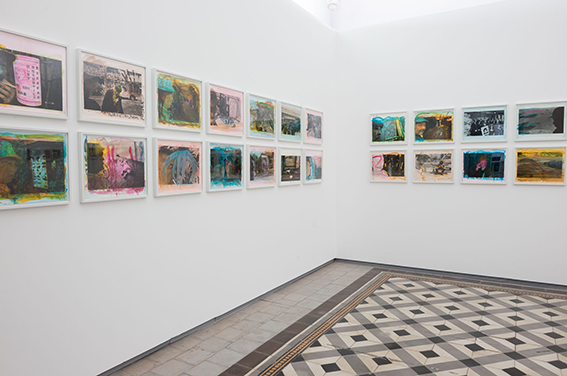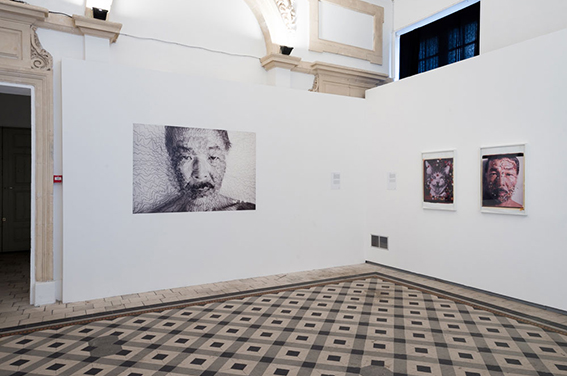Outstanding Contribution to Photography From Simon Baker
Article from Creative Review charting the outstanding contribution to photography Simon Baker has made at the Tate by .
Tate Modern hosted two major, critically acclaimed photography exhibitions this year: a retrospective of the work of German photographer Wolfgang Tillmans and The Radical Eye, which revealed Elton John’s spectacular collection of Modernist photography. Poles apart in content, the exhibitions epitomise the commitment that Tate now makes to photography.
![]()
This was not always the case. When Simon Baker joined Tate in 2009 as its first ever Curator of Photography, the institution’s interest in the medium was pretty low and it lagged behind other galleries and museums around the world in the collection of photographic works. But in just eight years, due to the work of Baker and his team, this has changed dramatically. This achievement is why we have chosen Baker for our Outstanding Contribution to Photography award in the Photography Annual this year.
“When you walk around [Tate] now you do see photography everywhere” Simon Baker
“When I started working at Tate I was really the only person pushing, a really annoying pressure group,” he admits, “constantly proposing things and pushing people to put photography up. And now we’ve got to the point where you actually do see photography everywhere. As a cultural shift, Tate has gone from really having only taken photography b into account on rare occasions to having it as part of its DNA.
“Personally, I don’t regard that as being my achievement – I work in a team, there’s myself and there’s Shoair Mavlian, who’s the Assistant Curator and between the two of us we’ve worked really hard to get photography normalised at Tate. So when you walk around now, you do see photography everywhere, and in displays we haven’t chosen and in exhibitions that we haven’t proposed. As an eight-year achievement for me and Shoan that has been really gratifying and positive.”
![]()
As well as photography featuring in numerous exhibitions, and across the collection in the expanded spaces in Tate Modern, which opened last year, Tate also made the significant acquisition of Martin Parr’s photobook collection this year. An arrangement six years in the making, the collection was purchased with support by the LUMA Foundation and now makes Tate one of the leading institutions in terms of photobooks.
“We’ve literally gone from zero on the world Geiger counter of photobook collections to arguably having the broadest and most interesting and most diverse collection anywhere in the world,” agrees Baker. “That’s so exciting for the future, for researchers and for visitors, and it’s also great for Martin because the acquisition enabled him essentially to set up the Foundation [his new gallery and studio space in Bristol, which opened in October].”
Tate has also shown a commitment to the photobook world for the past three years by hosting Offprint, a photobook/independent publishing fair held in the Turbine Hall to coincide with the annual Photo London event.

Offprint allows visitors direct access to photographers and publishers, and also the opportunity to buy relatively cheap artworks direct from makers. “We love the idea that Tate is the ‘off’ venue,” says Baker. “Photo London is a commercial fair for collectors, who are wealthy collectors, and we have this fair at the same time which is for people who can buy an original for £30. That whole world, the world of independent publishing and photobooks, is very friendly, it’s very young, it’s very creative – people design their own books, they publish their own books … it’s a really lovely world and something that we’re so happy to be the home of.”
Appropriately then, the photobook world is one of Baker and his team’s key sources for discovering new talent. “We really do most of our research and our work through the photobook,” he says. “That’s where we b discover people – we go to all the book fairs … we look around, we look at the publishers, we look at the great books that are coming out, we go on juries.
“The next show we have at Tate Modern in May – Into The Light: Photography and Abstract Art – the three youngest artists in that show, who are all in their 30s, they are all people we’ve met through the book world,” he continues. “We’ve seen their amazing, beautiful books and then you go and talk to them…. That leads you to their galleries but it also leads you to understand their work quite fully and quite directly in an unmediated way, because they’re often able to make exactly the book that they wanted, rather than waiting for Thames & Hudson in 30 years’ time to do the retrospective book.”

Baker cites independent publishers as leading the way in the UK in terms of championing new talent in photography. “As a result of London not having a very strong photography gallery context, by comparison with New York for example, the young publishers have become like the talent spotters and curators for photography,” he says. “If you keep an eye on who Michael Mack is publishing or you keep an eye on who Arön Morel is publishing, or Trolley Books or any of these smaller publishing houses, you’re really seeing the best new stuff because they’re making a big effort to find the best people and decide how to support them. That’s the equivalent of our colleagues in contemporary art going round the smaller galleries.”
While 2017 has been a great year in general in UK photography, with galleries including the Serpentine, the Whitechapel and the Science Museum also hosting significant shows, and festivals taking place in Oxford, Derby, Brighton and Edinburgh, amongst other destinations, Baker admits that the UK still tends to lag behind countries such as France or the US in terms of its commitment to the medium.
“We’re certainly not anywhere near the level of France,” he says. “If you think of the Arles festival – admittedly it’s been going for 30 or 40 years – they get the Minister of Culture and usually the President visiting. It’s unimaginable in Britain. I know it’s not comparable but I don’t see the Ministry of Culture and the Prime Minister going to Format in Derby. There is a difference. There’s a cultural attachment to photography in France and America, and to a certain extent in Germany, that we don’t really have. But that doesn’t mean that we can’t have it, just because we haven’t had it historically.”
Baker can see the medium continuing to grow in the UK, and Tate is committed to collecting and exhibiting photography from all areas, from documentary to art to fashion and other more commercial spheres too. He sees photography’s innate accessibility as key to reaching new audiences.
“As art has become quite conceptual and quite difficult for people to engage with in some cases, photography offers people a bit of a hand, a bit of a help,” he says. “If you go to a photography show, you have an understanding of some kind of connection to the real world, and some kind of connection to your own experience, which needn’t necessarily be the case if you go to see a sculpture show or a painting show. The work doesn’t have to be simple, but there’s always a way into it.
“It’s a very obvious thing to say,” he concludes, “but it’s so important that photography is just seen alongside other mediums as equal. When you walk around Tate, it’s just there, next to the Warhols and the Picassos and everything else.”